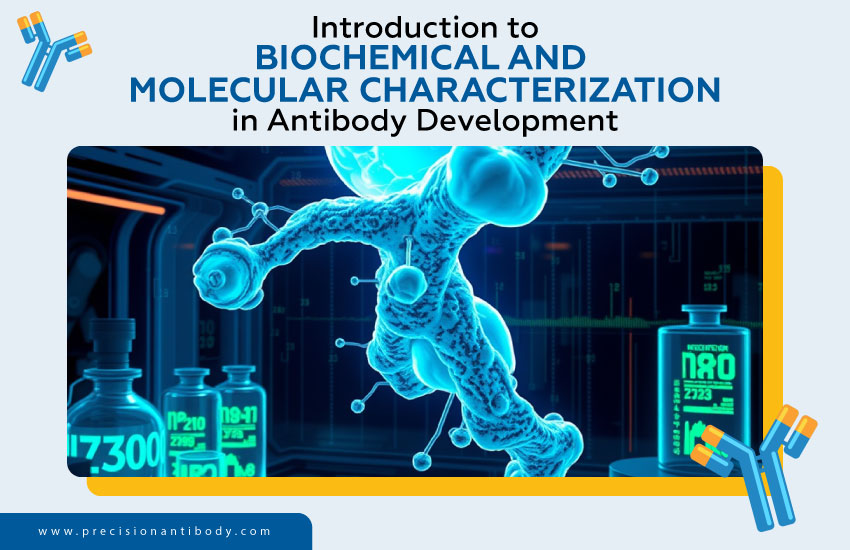
One of the most critical stages of antibody creation is biochemical and molecular characterization, which guarantees that antibodies are safe and effective for therapeutic application. This procedure thoroughly examines an antibody’s structural and functional characteristics, which is crucial for use in research, diagnosis, and therapy.
Biochemical characterization looks at the chemical features of antibodies, like how stable they are in different situations, how they change after translation, and how many amino acids they contain.
In molecular characterization, the genetic and structural components of the antibody molecule are examined. These components include the antibody’s shape and sequence in various regions. These tests are essential to ensure that the antibody still possesses the desired structure and function after it has been manufactured and put into use.
Many biochemical and molecular approaches are utilized to characterize antibodies. Size exclusion and ion-exchange chromatography are used for purity and aggregate detection. Mass spectrometry provides detailed post-translational modifications and molecular weight.
NMR spectroscopy and X-ray crystallography can show the three-dimensional structure of the antibody, which is essential for understanding how it binds to antigens. Biolayer interferometry (BLI) and surface plasmon resonance (SPR) are two ways to check how quickly and strongly an antibody binds to its antigen.
This characterization method helps detect and resolve antibody safety, effectiveness, and stability concerns throughout development. If researchers understand antibody biochemistry and molecular characteristics, they can produce better therapeutic antibodies that cause less immune system development. In the blog ahead, learn how custom antibody development uses molecular insights to address research hurdles, improve specificity, and improve experimental results.
In the field of therapeutic antibodies, which is undergoing rapid research and development, meticulous characterization is an essential component for achieving success. By going through this very careful process, antibodies are guaranteed to not only meet the established safety and effectiveness standards but also work the same way in many different situations.
Recent papers highlight the significant significance that antibody characterization plays in improving the reproducibility of research in the life sciences. The study suggests that greater knowledge of and training in rigorous antibody validation should be provided to guarantee that laboratories will produce consistent and dependable results.
Functional characterization is necessary to determine an antibody’s biological activity. By ensuring that the antibody binds to its target antigen at the right level, researchers can determine how well it might work as a medicine and avoid any harmful effects.
Comprehensive characterization is a useful tool for screening and choosing monoclonal antibodies in therapeutic settings because it helps define important quality traits. This method allows antibodies that possess the best possible qualities to progress through the development phase which ultimately increases the possibility of clinical success.
In diagnostic situations fully described antibodies make tests more accurate by ensuring that antigens are detected reliably and specifically. This level of precision is absolutely necessary for the early detection and monitoring of diseases, which ultimately leads to healthier outcomes for patients.
Comprehensive antibody characterization is needed to make sure that antibodies are reliable, effective, and safe in a variety of settings, such as research and clinical ones. Scientific researchers and medical practitioners who invest in complete characterization methods can propel improvements that result in significant health benefits.
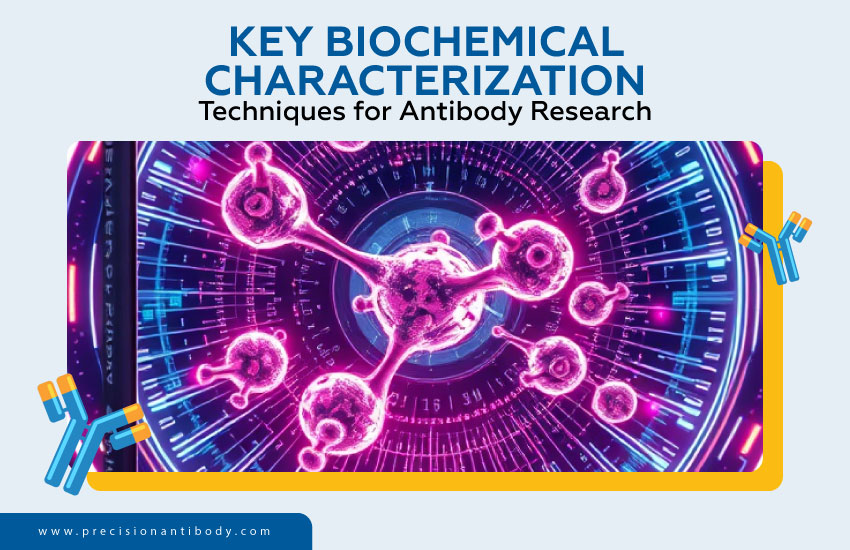
Accurate biochemical characterization is crucial in antibody research to ensure that antibody-based treatments work, are safe, and are of good quality. Numerous sophisticated methods are used to evaluate different aspects of antibodies each offering a distinct perspective on their characteristics.
HPLC is a strong analytical technology utilized to determine the purity level of monoclonal antibodies (mAbs). High-performance liquid chromatography (HPLC) can find and measure differences in the product, like chunks or aggregates, that could affect the antibody’s safety activity or effectiveness.
This is accomplished by separating components depending on their interactions with the column material. Size exclusion and ion-exchange chromatography are two methods often used in high-performance liquid chromatography (HPLC) to examine these variants.
The surface plasmon resonance (SPR) assay is a label-free, real-time assay that evaluates the interaction between an antibody and its antigen. It provides significant information on the binding kinetics and affinity of the antibody.
This technology offers increased sensitivity and specificity, removing many of the restrictions associated with older approaches. SPR is a great way to find bispecific antibodies because it lets you look at interactions with many antigens at the same time, making it particularly valuable.
The enzyme-linked immunosorbent assay, or ELISA, is a method that is often used to check that antibodies work as they should.
Because of its sensitivity, speed, and ability to be developed in complex matrices, it is suitable for many applications. When scientists want to test how well two types of antibodies bind to antigens in a lab setting, they usually use an enzyme-linked immunosorbent assay, or ELISA.
Variability in antibody production can be attributed to several factors, including variations in cell lines, culture conditions, and purifying procedures. Due to variability, the finished product may be heterogeneous, affecting its efficacy and safety.
It is vital to conduct comprehensive characterization, which includes utilizing techniques such as high-performance liquid chromatography (HPLC) and surface plasmon resonance (SPR), to discover and manage these variances and ensure that antibody therapies are of uniform quality.
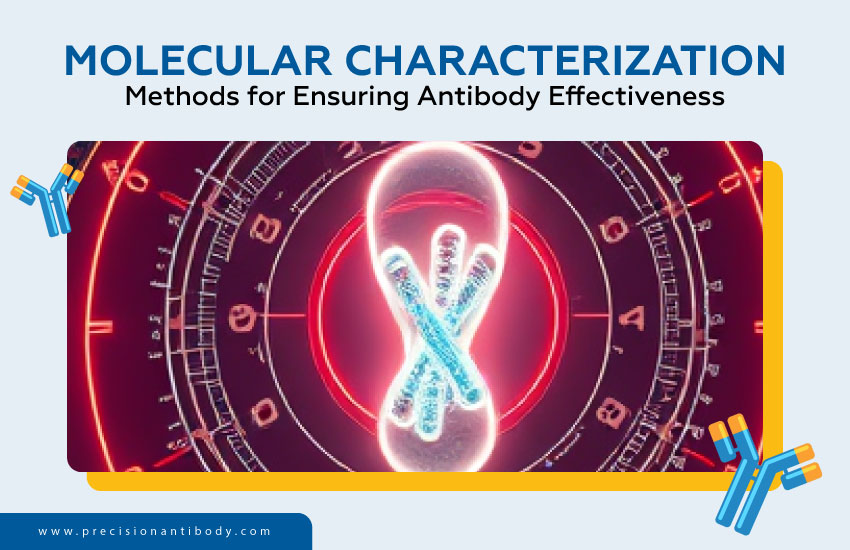
Thorough molecular characterization is required to guarantee the efficacy of therapeutic antibodies. Several analytical methods are used in this process to evaluate stability, post-translational changes, and structural integrity.
One essential method for identifying and examining protein alterations in antibodies is mass spectrometry (MS). It gives a lot of information on molecular weight, sequence, and post-translational modifications, which are all very important for understanding how antibodies work and what they do.
Recent improvements in MS-based techniques have made it much easier to characterize monoclonal antibodies. This makes it possible to find modifications more accurately and speeds up the development of new medicines.
Clarifying antibodies mechanisms of action and interactions with antigens requires an understanding of their three-dimensional structure. Methods like cryogenic electron microscopy (cryo-EM) and X-ray crystallography have made high-resolution structural data possible.
A new study shows that these methods can be used to monitor specific changes in antibody structure and movement in solution, which is very useful for understanding how they work.
Because antibody aggregation can hurt safety and effectiveness, stability analysis is essential in molecular characterization. Differential Scanning Calorimetry (DSC) and Dynamic Light Scattering (DLS) are frequently used to evaluate these characteristics.
A study that examines how antibody fragments affect aggregation shows how important these kinds of studies are for understanding and fixing problems with aggregation and ensuring the production of stable therapeutic antibodies.
These molecular characterization techniques are very important for developing safe and effective antibody-based treatments because they provide valuable information about the structural and functional properties needed for therapy to work.
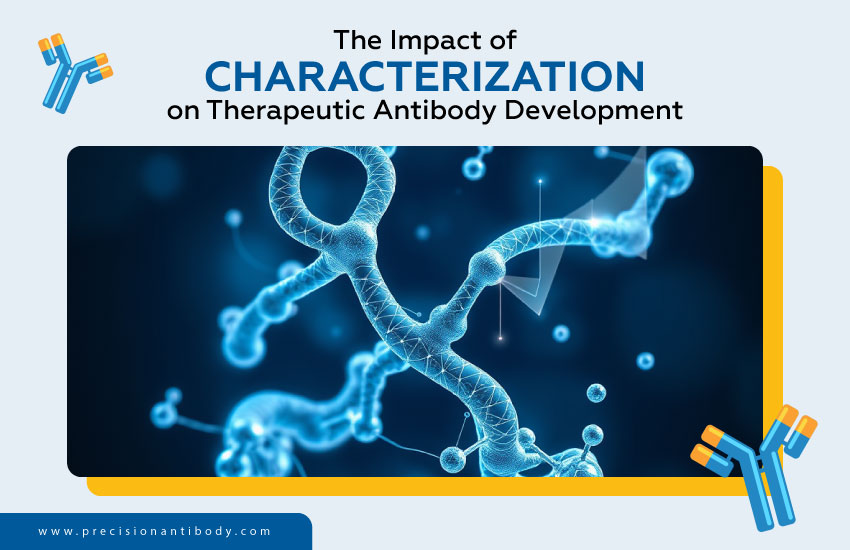
Careful characterization is essential in therapeutic antibody development to guarantee safety and efficacy. Researchers can examine antibodies’ biological, immunological, structural, and physicochemical properties closely to find and fix any problems that might arise early in the development process.
Comprehensive antibody characterization is essential to the creation of new treatments. It guarantees that antibodies are both safe and effective, which eventually improves therapeutic results and advances biomedical research.
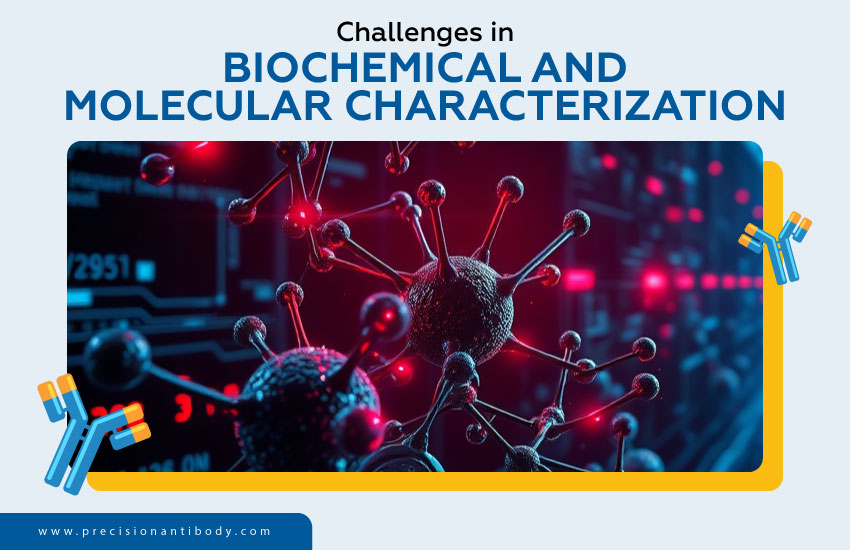
The safety, effectiveness, and quality of monoclonal antibodies (mAbs) in therapeutic settings depend on how well they are characterized biochemically and molecularly. However, this procedure is not without difficulties, especially due to the intricate structures of antibodies, strict regulations and the requirement to scale characterization techniques for commercial production.
Large, Y-shaped glycoproteins with variable (V) and constant (C) regions make up monoclonal antibodies. They are made up of two heavy and two light chains. Antigens bind in the variable regions, especially the complementarity-determining regions (CDRs), which are very different from one another. This structural intricacy makes categorization difficult:
To overcome these obstacles, sophisticated analytical methods are used, such as mass spectrometry, spectroscopy, electrophoresis, and chromatography. These methods let us look closely at the PTMs, higher-order structures and physicochemical properties of the antibody, which guarantees a complete understanding of their features.
The World Health Organization (WHO) and other regulatory bodies have set strict standards for the creation and quality assurance of mAbs. These recommendations stress the need for comprehensive characterization to guarantee the efficacy and safety of products:
Adhering to these regulatory requirements ensures that mAb products are safe, effective, and of high quality thereby protecting patient health.
Characterization becomes more complicated when mAbs are produced on a commercial scale as opposed to in a lab:
To overcome these problems and ensure that mAbs made on a large scale maintain the necessary quality standards, we need advanced bioprocessing technologies, strict analytical testing, and regulatory compliance.
Characterizing monoclonal antibodies biochemically and molecularly is a complex but necessary task. Getting therapeutic antibodies to patients safely and effectively means overcoming problems with structural complexity, regulatory limits, and large-scale manufacturing.

Modern technologies have the potential to change the therapeutic development process entirely, and the field of antibody characterization is undergoing a revolutionary evolution. When we think about the future, two big changes are happening: methods are being created to improve therapeutic antibodies, and AI and ML are being used in biochemical analysis.
Integrating AI and ML into biochemical analysis is like adding a new tool to the scientific toolbox, offering previously unheard-of skills in managing intricate information and identifying patterns that are elusive to conventional techniques.
With the promise of more effective and accurate therapeutic innovations these discoveries imply that AI and ML are not merely the cherry on top but are instead increasingly essential to the heart of antibody characterization.
Advanced characterization techniques are essential to ensure the safety, effectiveness, and quality of therapeutic antibodies.
These sophisticated characterization technologies essentially support the generation of therapeutic antibodies allowing molecules to be fine-tuned to satisfy clinical requirements.
The combination of advanced biochemical methods with AI-driven analytics signals the beginning of a new era in antibody characterization one in which therapeutic antibodies will be created with previously unheard-of accuracy and efficiency.
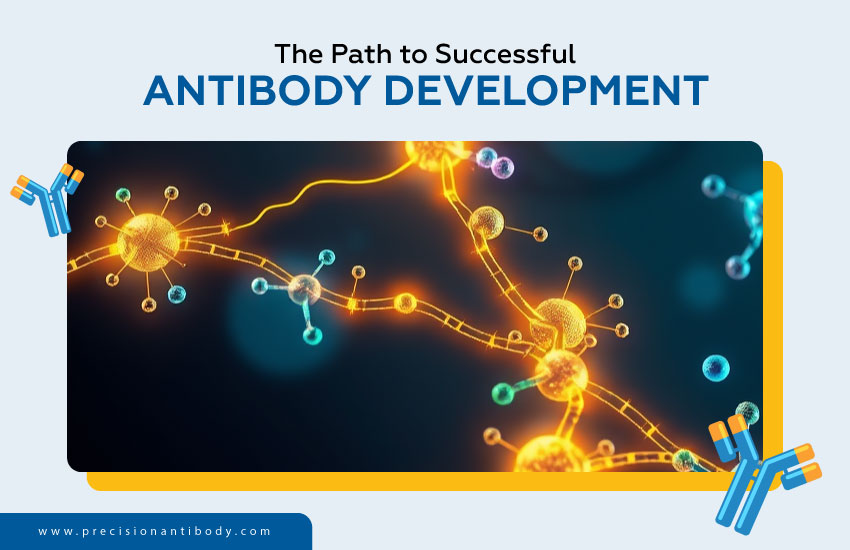
The process of developing antibodies is dynamic and combines creativity, accuracy, and resiliency; it is not just a scientific undertaking. Therapeutic antibodies are becoming safer and more successful as the field develops, thanks to the combination of state-of-the-art technology like artificial intelligence and machine learning with reliable biochemical characterization techniques.
Crucial phases in this process include comprehending the complicated nuances of antibody structures, complying with strict regulatory requirements, and scaling procedures for commercial manufacturing. Cutting edge analytical techniques, such as surface plasmon resonance and mass spectrometry make sure that every therapy candidate is fully characterized for optimal effectiveness.
An effective antibody creation process requires a balance of technology, science, and regulation. If research keeps pushing the edge, tailored, superior antibodies that meet the growing needs of individualized treatment are possible. In an ever-changing industry, innovation must be balanced with patient safety and scientific rigor.
What do you think will happen to antibody development in the future? Post your thoughts in the comments section below! Visit our website for the most recent research and industry updates, or keep in touch for further insights.
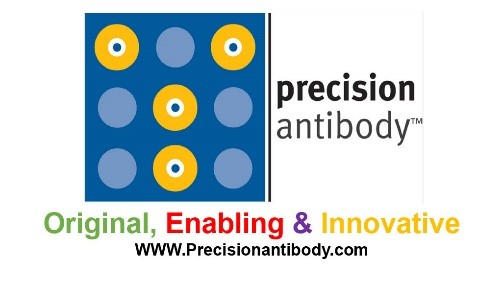
Led by innovative minds in immunology and the antibody development field, Precision Antibody has been an industry leader for over 20 years. We not only implement a cutting-edge technique in antigen design, antibody development, production, and other analyses, but we are also constantly working on ways to improve and advance technology to match the ever-changing world of science. If you are interested in learning more about Precision Antibody’s Custom Antibody development.
Precision Antibody™ is the forefront of the global Custom Antibody industry & it is led by the innovative minds in immunology and antibody development field.
